Conducting a Functional Behavior Assessment (FBA) can feel like a big task, but it’s really about taking it step by step! 😊
This structured approach is super helpful! It not only uncovers the underlying reasons for those challenging behaviors but also allows you to create targeted interventions. These interventions can really foster positive behavioral changes and support your child’s development. So, let’s explore this together and make the process a little easier for you!
Understanding a child's challenging behaviors can often feel like navigating a complex maze. Many parents find themselves searching for effective strategies to make sense of it all. A Functional Behavior Assessment (FBA) provides a structured way to uncover the reasons behind these behaviors. By doing so, it empowers caregivers to implement targeted interventions that can foster positive change.
However, even with the potential benefits, many parents struggle to grasp the intricacies of conducting an FBA. This raises an important question: how can they effectively harness this powerful tool to support their child's development? Let’s explore this together! We’re here to help you every step of the way!
A Functional Behavior Assessment (FBA) is a systematic process that teaches how to conduct an FBA to uncover the underlying reasons for a child's challenging behaviors. Understanding how to conduct an FBA involves collecting data that reveals why these actions occur, whether it's seeking attention, avoiding tasks, or expressing frustration. Understanding the purpose behind these behaviors allows parents and caregivers to create targeted interventions that address root causes instead of merely managing symptoms. This proactive approach is crucial for encouraging positive behavior changes and supporting the child's overall growth.
Interestingly, many parents may not fully grasp the purpose of FBAs in changing behavior, highlighting the need for increased awareness and education. For instance, research shows that while a significant number of parents recognize the importance of understanding challenging behaviors, only a few can articulate how to conduct an FBA and how it contributes to effective behavior management. One study even found that 45.6% of participants identified attention as a function of behaviors, emphasizing the need for parents to understand these dynamics.
Real-life examples showcase the transformative power of FBAs. Take, for example, a student who frequently had outbursts in class. After understanding how to conduct an FBA, it was revealed that the behavior served as a way to avoid difficult tasks. With this insight, educators implemented a tailored intervention that not only reduced the outbursts but also enhanced the child's engagement and academic performance. Such stories highlight how to conduct an FBA that can guide interventions aimed at achieving meaningful behavioral improvements. Plus, FBAs are required by laws like IDEA 2004 and Colorado HB 12-1345, reinforcing their significance in educational environments. Typically, understanding how to conduct an FBA involves a process that takes several weeks to complete, including:
This gives parents a clear timeline for the evaluation.
Let’s explore this together! Understanding FBAs can be a game changer for your child's development.
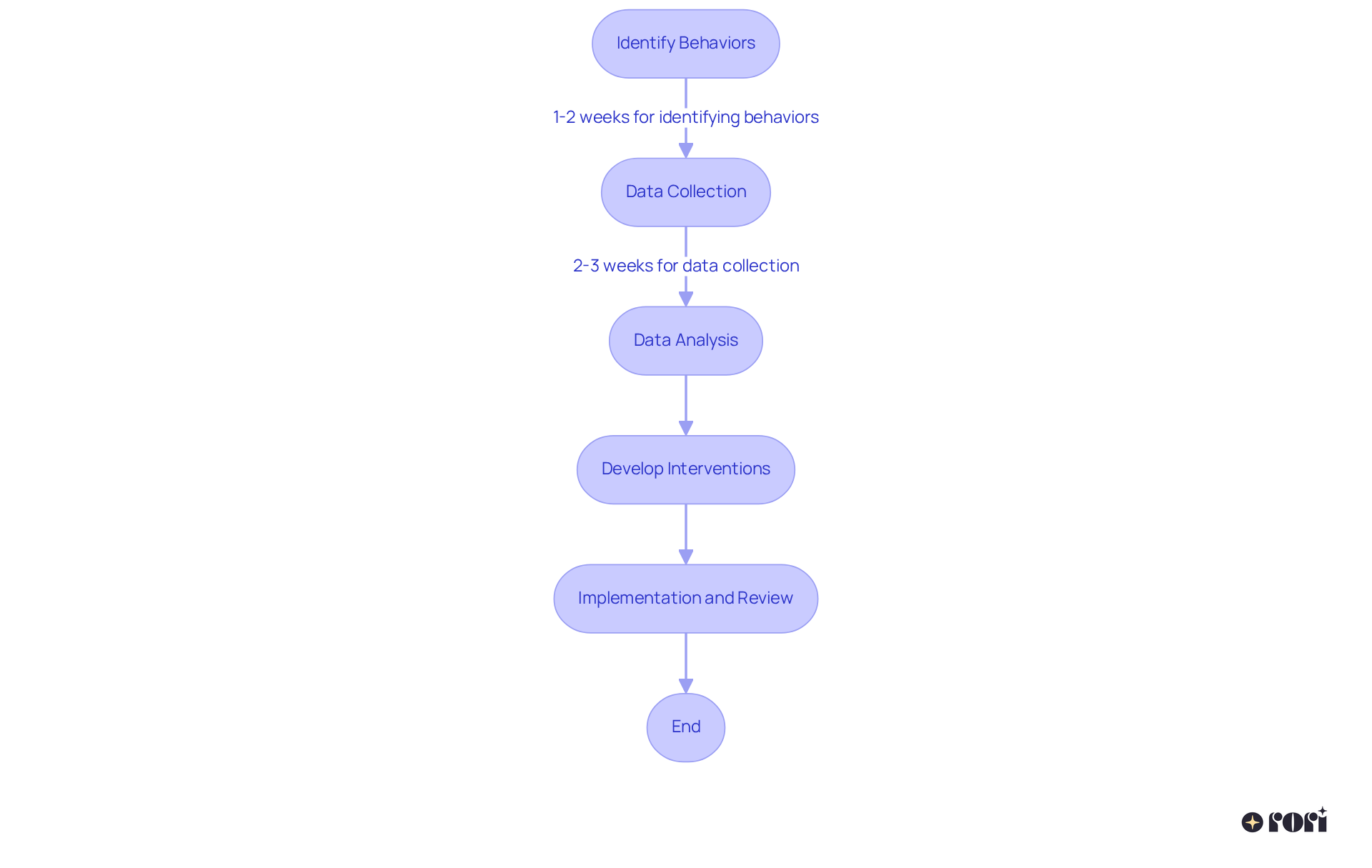
To conduct a Functional Behavior Assessment (FBA), let’s walk through some essential steps together:
Identify the Issue of Concern: Start by clearly defining the specific behavior that’s causing concern. Use observable and measurable terms. This clarity is crucial! Did you know that about 59% of individuals with autism may engage in self-injurious behavior, aggression, or destructiveness at some point? That’s why precise identification is so important.
Gather Information: Next, collect data through interviews, observations, and existing records. Chat with educators, caregivers, and your child to gather different perspectives. Remember, cooperation is key! Successful plans need input from everyone involved in your child’s life.
Conduct Direct Observations: Observe your child in various settings to see when and where the behaviors happen. Take detailed notes on the context and any triggers. Research shows that many behaviors can be best prevented at the universal level, so thorough observation is essential.
Analyze Antecedents and Consequences: Look at what happens before (antecedents) and after (consequences) the behavior. This analysis helps you understand the role of the actions. Keep in mind that behaviors can be influenced in different ways depending on the context. Interestingly, 45.6% of participants found a function through Structured Descriptive Assessment (SDA), showing how effective structured assessments can be.
Develop a Hypothesis: Based on what you’ve gathered, come up with a hypothesis about why the behavior occurs. Think about environmental influences and emotional triggers. As Ted Carr points out, if we pick an intervention just based on the child’s actions and ignore the environment, we might only stop the behavior temporarily. It’s all about understanding the context!
Test the Hypothesis: If possible, try out some strategies to see if changing specific variables affects the behavior. This testing can help confirm your hypothesis and guide future interventions. Remember, successful FBAs often involve multiple functions of behavior, so consider all influences carefully.
Document Findings: Keep a thorough record of your observations, information, and conclusions to share with professionals involved in your child’s care. Using tools like the FBA Profiler can help you document your findings effectively, ensuring everyone is informed and can work together on treatment strategies.
By following these steps, you can understand how to conduct an FBA, which will lead to more personalized and effective treatment plans for your child. There are many successful examples of FBAs conducted by parents, demonstrating the amazing impact you can have when you’re engaged in the assessment process. Let’s explore this together!
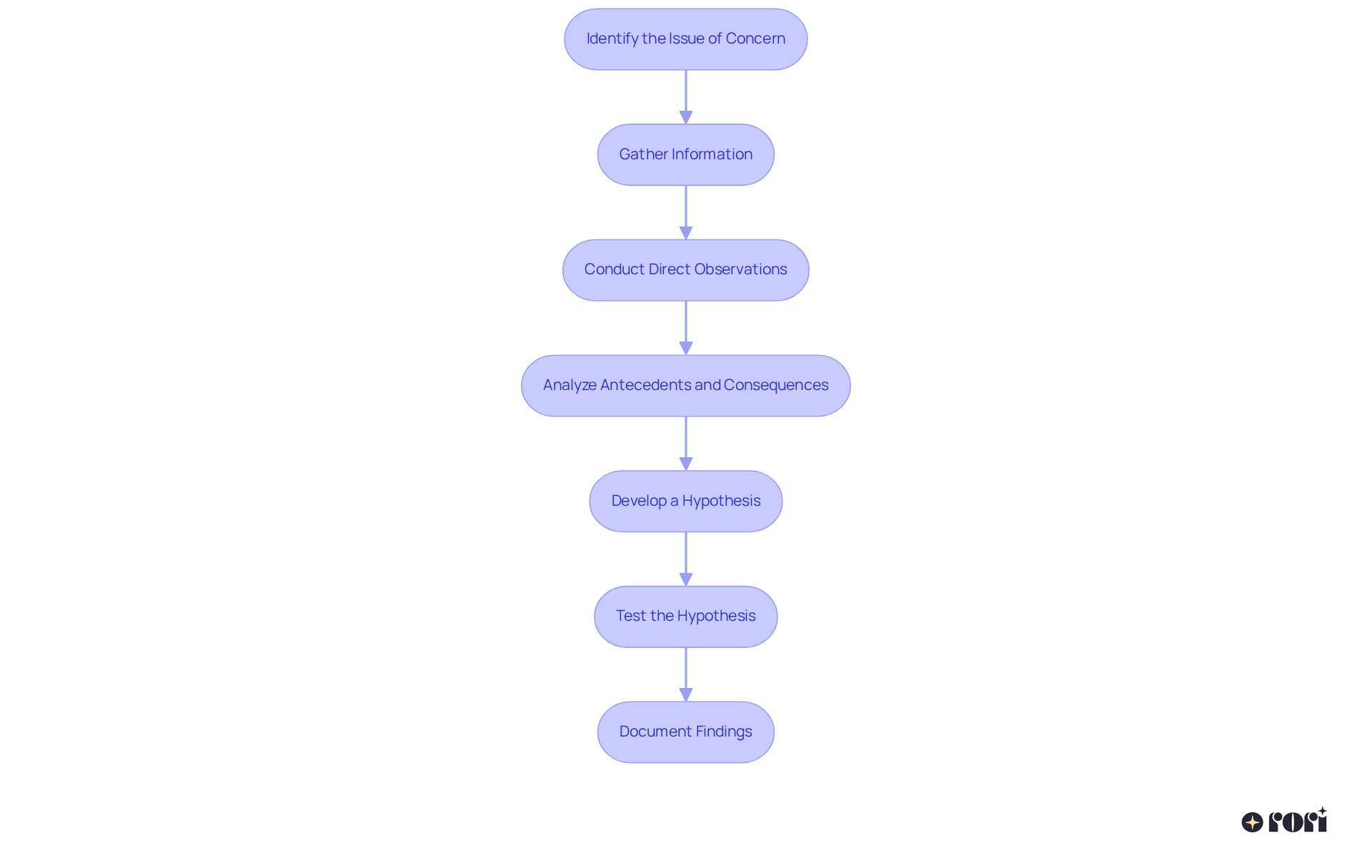
Once you’ve gathered your information, the next step is to take a closer look at it to understand the functions behind the actions. Let’s dive into how you can do this together:
Let’s explore this together! Remember, you’re not alone in this journey, and we’re here to help you every step of the way!
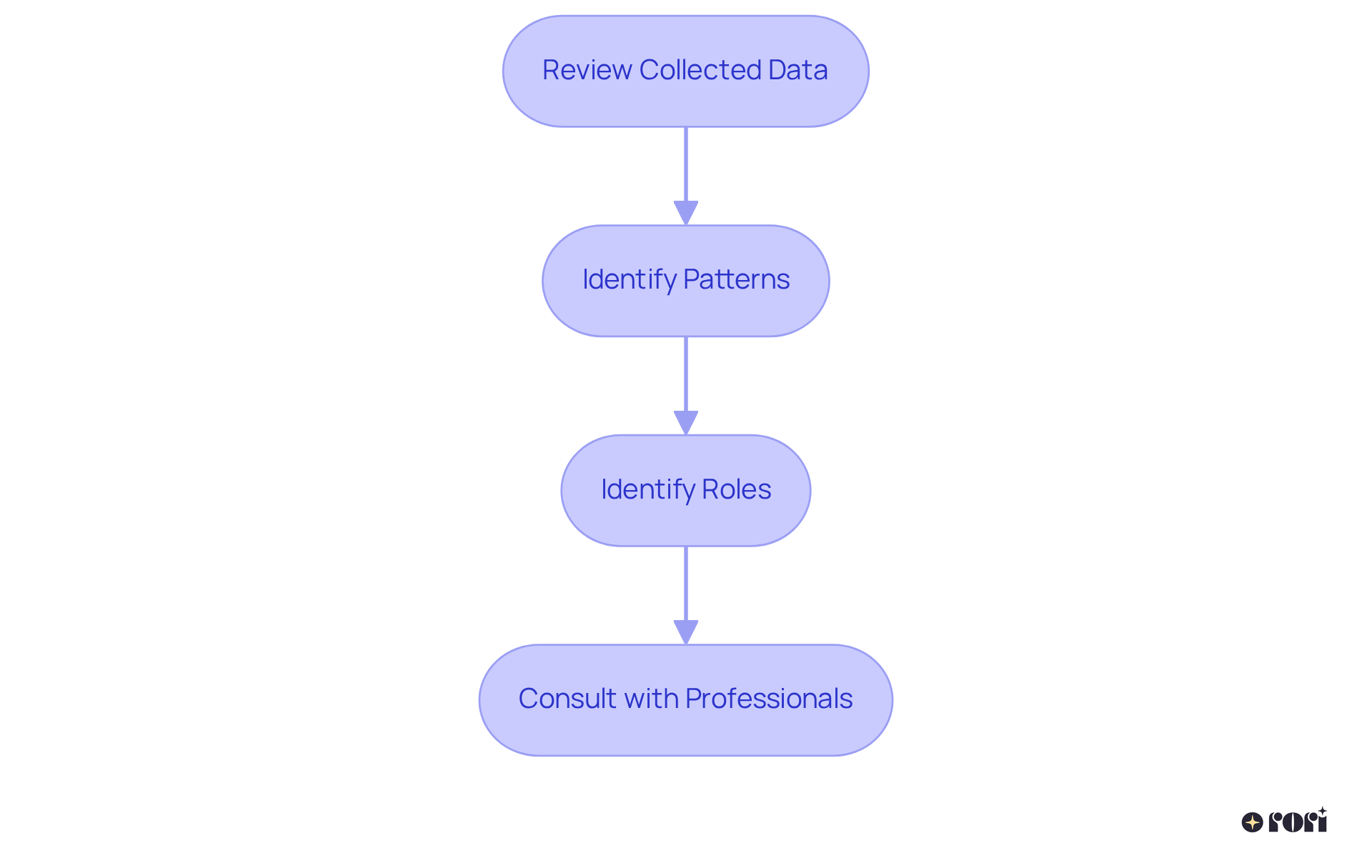
After taking a good look at the data and understanding the roles of the actions, the next step is to create a Behavior Intervention Plan (BIP). Let’s explore how to create one together:
We’re here to help you every step of the way!
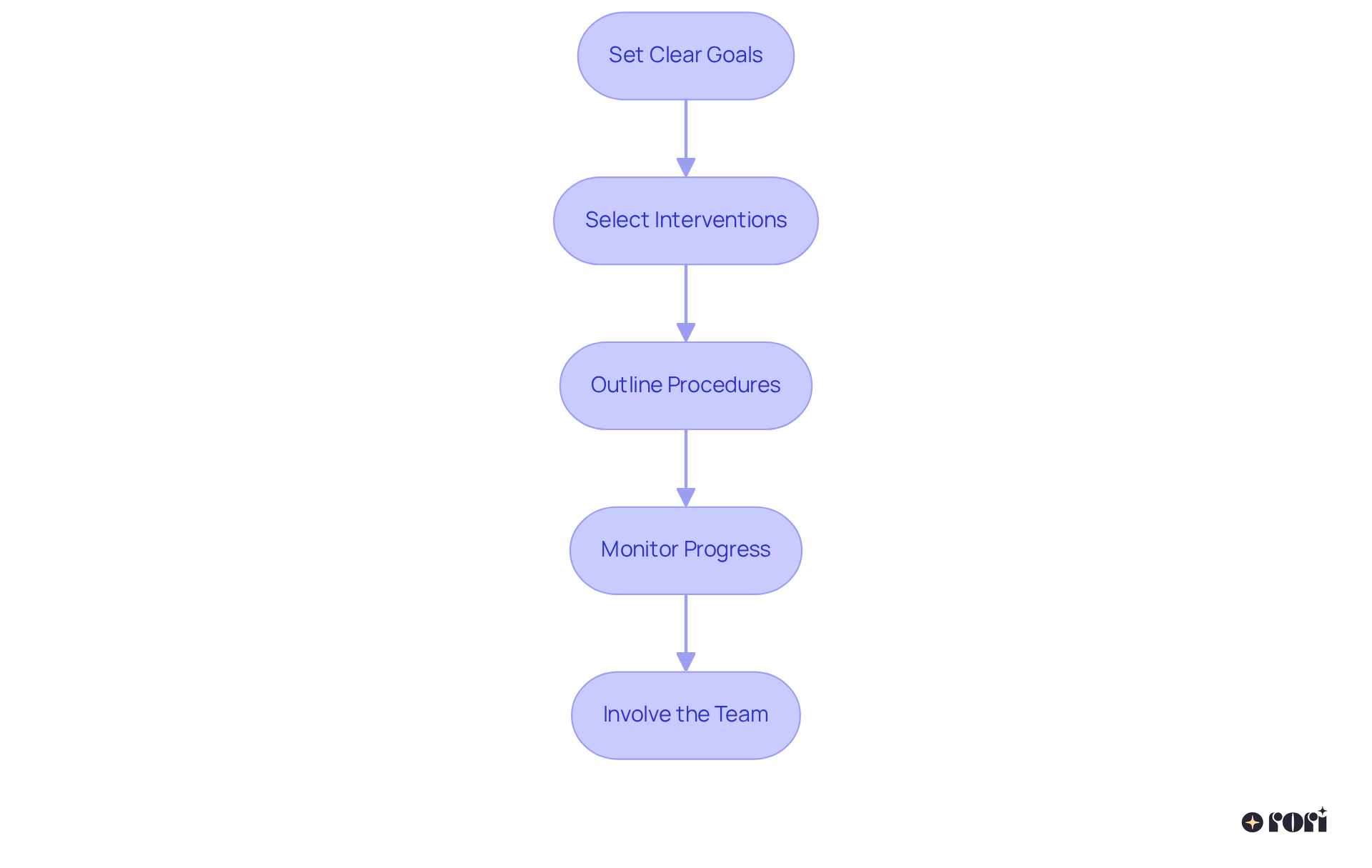
To effectively understand how to conduct an FBA, let’s explore some helpful tools and resources that can make the process smoother for you.
Conduct Checklists: Implementing checklists is a great way to record specific actions and their frequency. This helps in recognizing patterns over time! A study by Paterson and Arco (2007) suggests that structured checklists can significantly improve the precision of identifying actions, leading to more effective interventions.
Observation Forms: Creating or obtaining observation forms allows you to systematically document data during direct observations of your child. These forms are essential for gathering important information about their actions, helping you understand their needs better. For instance, using a format that includes areas for time, location, and specific actions can provide valuable insights.
Interview Guides: Structured interview guides can be a game-changer for gathering comprehensive information from teachers and caregivers. This method gives you a broader perspective of your child's actions across different settings, which is crucial for an accurate evaluation. As Johnson pointed out, 'Triggers can be internal or external elements that initiate or intensify actions.'
Data Analysis Software: Utilizing software designed for tracking and analysis can enhance your data collection and interpretation. The latest technology in activity tracking offers real-time insights, making it easier to monitor progress and adjust interventions when needed.
Professional Consultation: Don’t hesitate to engage with Board Certified Behavior Analysts (BCBAs) or other professionals for guidance on how to conduct an FBA. Their expertise can help ensure that your evaluation is thorough and that the resulting interventions are tailored to your child’s unique needs. As Brown wisely noted, "Each component of the FBA contributes to a more holistic understanding of the child's behavior."
We’re here to help you every step of the way! If you have any questions or need support, feel free to reach out.
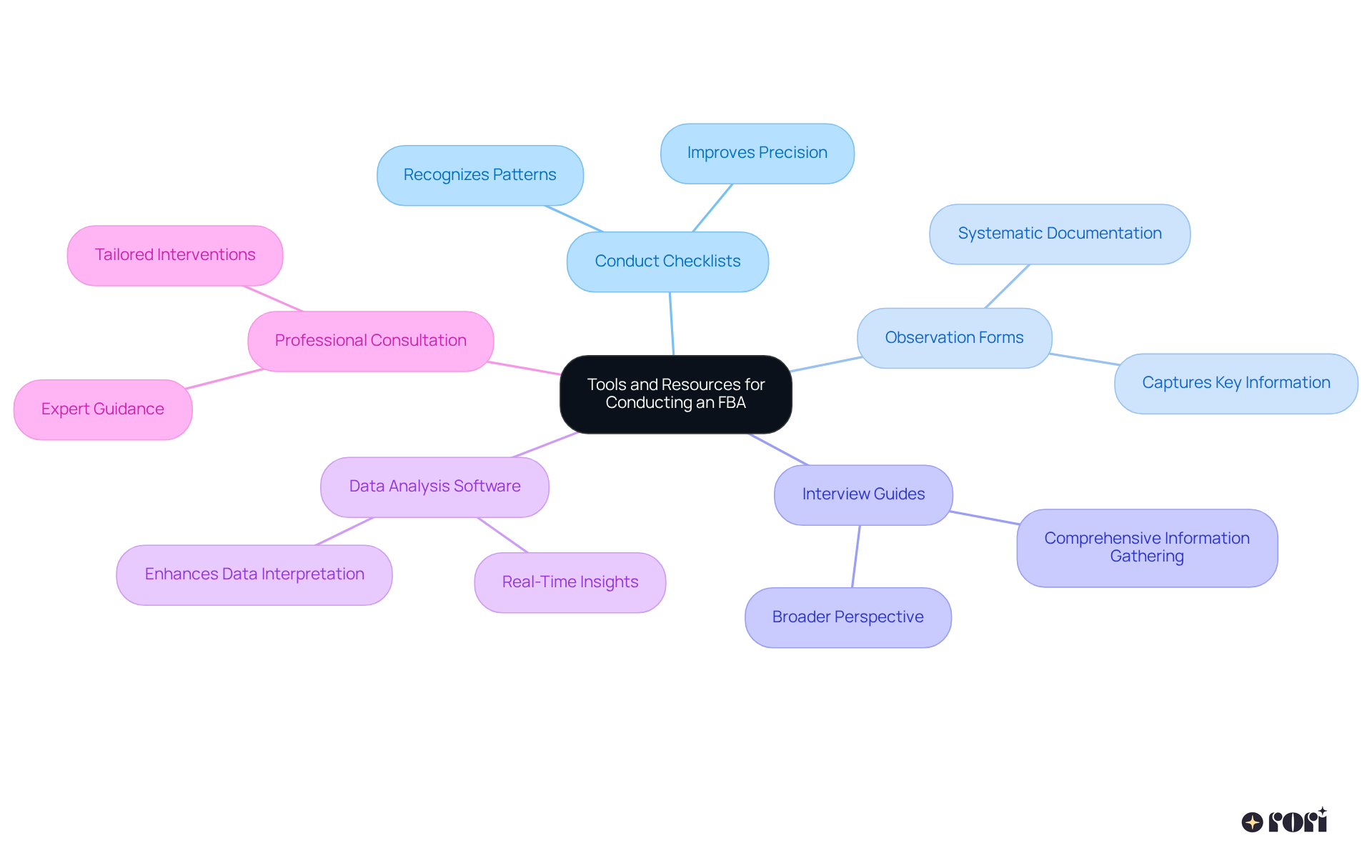
Understanding how to conduct a Functional Behavior Assessment (FBA) is essential for parents looking to tackle their child's challenging behaviors effectively. This systematic approach not only reveals the underlying reasons for these behaviors but also empowers parents to implement targeted interventions that encourage positive change. By focusing on the root causes rather than just managing symptoms, families can create a supportive environment that nurtures their child's growth and development.
Throughout this article, we've outlined several key steps in the FBA process. These include:
Each step is crucial for understanding the dynamics of a child's actions, allowing parents to collaborate with educators and professionals to create effective strategies tailored to their child's unique needs. We also emphasized the importance of utilizing tools and resources, like checklists and observation forms, to enhance the assessment process.
Ultimately, conducting an FBA is not just a procedural task; it’s a meaningful journey towards understanding and supporting a child's behavior. Parents are encouraged to engage actively in this process, seek professional guidance, and utilize available resources to ensure that their interventions are informed and effective. By doing so, they can significantly impact their child's behavioral development, paving the way for a more positive and fulfilling life experience. Let’s explore this together, and remember, we’re here to help you every step of the way!
What is a Functional Behavior Assessment (FBA)?
A Functional Behavior Assessment (FBA) is a systematic process designed to uncover the underlying reasons for a child's challenging behaviors, helping to identify whether these actions are driven by needs such as seeking attention, avoiding tasks, or expressing frustration.
Why is understanding the purpose of FBAs important?
Understanding the purpose of FBAs is crucial because it enables parents and caregivers to create targeted interventions that address the root causes of behaviors rather than just managing the symptoms, promoting positive behavior changes and supporting the child's overall growth.
What steps are involved in conducting an FBA?
The steps to conduct an FBA include: 1. Identify the Issue of Concern 2. Gather Information 3. Conduct Direct Observations 4. Analyze Antecedents and Consequences 5. Develop a Hypothesis 6. Test the Hypothesis 7. Document Findings
How long does the FBA process typically take?
The FBA process typically takes several weeks, with 1-2 weeks for identifying behaviors and 2-3 weeks for data collection.
What types of information should be gathered during an FBA?
Information should be collected through interviews, observations, and existing records. Input from educators, caregivers, and the child is essential for a comprehensive understanding.
What role do antecedents and consequences play in an FBA?
Antecedents are events that occur before a behavior, while consequences are what happens after the behavior. Analyzing these helps to understand the context and influences of the behavior.
What should be documented during the FBA process?
It is important to keep a thorough record of observations, information gathered, and conclusions. This documentation aids in sharing findings with professionals involved in the child's care.
Are there legal requirements for conducting FBAs in educational settings?
Yes, FBAs are required by laws such as IDEA 2004 and Colorado HB 12-1345, highlighting their significance in educational environments.